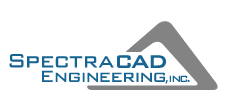In the world of PCB design, traceability is a fundamental concept that encompasses the ability to track and document every component, process, and decision throughout the entire design and manufacturing journey. It is a critical element for quality assurance and compliance with ISO standards, ensuring that any issues or defects can be traced back to their source. In this technical blog post, we will explore the importance of traceability in the PCB design industry, its role in maintaining high-quality products, and how it aligns with ISO standards.
The Significance of Traceability
- Quality Assurance
One of the primary purposes of traceability in PCB design is to maintain and improve product quality. By tracking every step of the design and manufacturing process, it becomes easier to identify and rectify issues that may compromise the quality of the final product. This proactive approach to quality assurance reduces the likelihood of defects, costly rework, and customer dissatisfaction. - Error Detection and Prevention
Traceability serves as a powerful tool for error detection and prevention. In the event of a defect or failure, traceability allows designers and manufacturers to pinpoint the exact step in the process where the issue occurred. This not only streamlines the troubleshooting process but also provides insights into how similar issues can be prevented in the future. - Compliance with ISO Standards
ISO (International Organization for Standardization) standards are globally recognized benchmarks for quality and consistency. Many ISO standards, such as ISO 9001 and ISO 13485, require traceability as a part of their quality management systems. Compliance with these standards is often essential for PCB design firms that serve industries like aerospace, medical devices, and automotive, where safety and reliability are paramount.
How Traceability is Implemented in PCB Design
- Component Tracking
Every component used in the PCB design must be tracked, from initial selection through procurement and assembly. This includes detailed records of part numbers, suppliers, lot numbers, and revision history. - Design History
The design history of the PCB is meticulously documented. Any changes or revisions, along with the reasons for these changes, should be recorded to ensure full transparency. - Manufacturing Process
The manufacturing process is also thoroughly documented. This includes machine settings, operator actions, and test results. Each step is tracked to maintain consistency and eliminate potential sources of variability. - Testing and Inspection
Traceability extends to the testing and inspection phase. Test data, inspection results, and any anomalies should be recorded to facilitate analysis and continuous improvement.
Benefits of Traceability
- Faster Issue Resolution
With traceability in place, identifying the source of a problem becomes a swift and precise process. This minimizes downtime, reduces production delays, and improves customer satisfaction.’ - Continuous Improvement
By analyzing historical data, PCB design firms can identify recurring issues and implement corrective actions to enhance product quality. Traceability serves as a valuable feedback loop for ongoing process improvement. - Enhanced Reputation
Highly traceable processes and adherence to ISO standards can enhance a PCB design firm’s reputation. Customers in industries that prioritize quality and safety will have greater confidence in products with strong traceability practices.
Conclusion
Traceability is an essential element in the PCB design industry, aligning seamlessly with quality assurance and ISO standards. Its role in identifying issues, preventing defects, and ensuring compliance cannot be overstated. By diligently tracking every aspect of the design and manufacturing process, PCB design firms can consistently deliver high-quality products that meet the rigorous demands of today’s industries.
